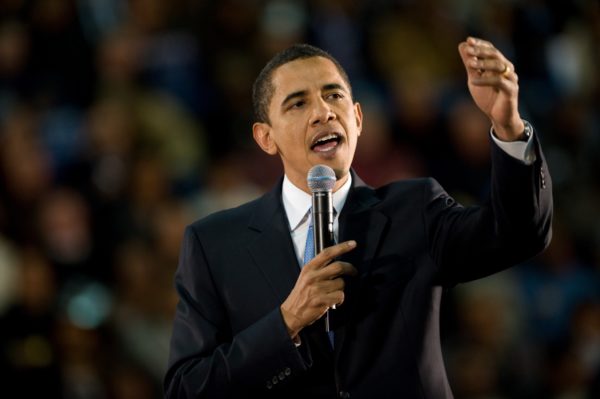The mainstream media has chosen over the year and a half of President Trump’s administration to largely ignore the economic boom that is happening, in favor of breathless reporting of the latest legal scalp taken by Robert Mueller. Now, with the economy’s growth harder to ignore, the New York Times has taken a novel approach to acknowledging it: credit President Obama.
Forget everything we said before
You read correctly. The current booming economy, with 4.1 percent GDP growth in the second quarter, the lowest unemployment numbers in years and the lowest unemployment figures for blacks and Hispanics ever, is now being credited by the New York Times to the policies of Obama. Late bloomer policies we suppose.
Investor’s Business Daily reports on this audacity by the Times in an August 10th editorial. But IBD sets the Times’ rewrite of history against their own words just three months before the November 2016 election:
In fact, The New York Times itself described Obama’s economy this way in August 2016: “For three quarters in a row, the growth rate of the economy has hovered around a mere 1%. In the last quarter of 2015 and the first quarter of 2016, the economy expanded at feeble annual rates of 0.9% and 0.8%, respectively. The initial reading for the second quarter of this year, released on Friday, was a disappointing 1.2%.”
IBD goes on to say, “GDP growth decelerated in each of the last three quarters of 2016.” Household income decreased that year also. The stock market had flattened out. The economy, after years of feeble growth under 2 percent per year, was actually slowing even further.
Journalists were predicting that the nation had entered a long term phase of “secular stagnation”, strangely reminiscent of Jimmy Carter’s “malaise” speech in July of 1979, seeing the nation in a “crisis of confidence” and calling for a tightening of the beleaguered nation’s belt even further. The media in 2016 seemed to be saying that American prosperity was a relic of the past.
The Trump Boom
But the rapid acceleration of the U.S. economy in the last year has Trump’s fingerprints all over it. His tax cut plan has put more money in Americans’ paychecks and given corporations incentives to make capital improvements and repatriate overseas operations back home. His deregulation has taken the handcuffs off of industry. Consumer confidence is soaring.
IBD points out that government economic policies can indeed take time to bloom, but in this case, the economy is booming in spite of Obama’s sclerotic eight years, not because of them. Donald Trump has removed the heavy handed Obama policies that kept it stifled.
However, dark clouds on the horizon
Although we continue to say that the effects of tax cuts and deregulation will benefit the American economy for decades to come, the current business cycle has grown very long in the tooth. Despite the current growth, gravity and Fed policy will, we believe, hasten a downturn.
The markets have now been in the longest bull market on record. Interest rates are on the rise and inflation has begun to stir. We expect the Federal Reserve to try, yet again, to bring the economy to a “soft landing” which almost always ends up in a bear market for stocks and ultimately a recession.
You can bet the mainstream media will have no compunction about hanging that around Trump’s neck, when the real culprit will be Fed overzealousness to try to stem inflation.
We expect a return to 1970s style inflation in the 2020s. So you need to prepare your investments for two eventualities.
First, prepare for the looming prospect of a bear market in stocks. The market has been on the rise for over nine years now. It cannot go on forever and the Fed interest rate hikes will take their toll. You cannot afford another bear market like we saw with the 2000 dot com crash and the 2008 housing market debacle.
Second, it is virtually certain your portfolio is not positioned for significant inflation. America has not experienced 1970s style inflation since that tumultuous decade. Yet even former Fed chair Alan Greenspan forecasts a return to stagflation in the 2020s.
Be prepared:
Contact our office for a complimentary portfolio review.
Sign up for our next Smart Money Education Workshop.
Listen to the latest edition of Jerry Tuma’s Smart Money Radio.

